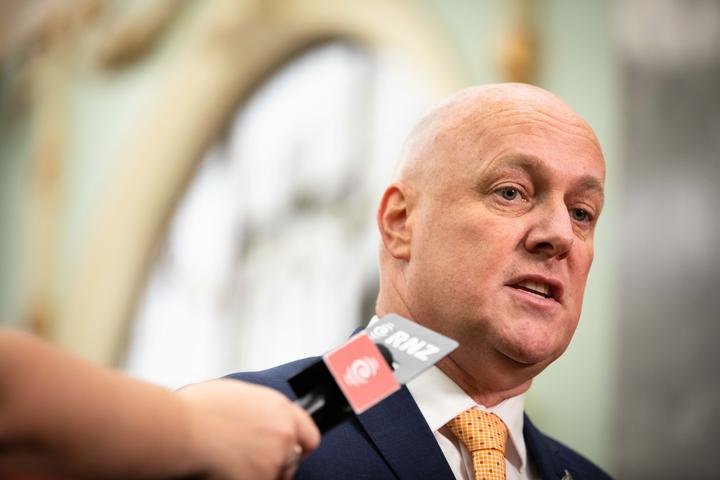River brings researchers together
River brings researchers together
Researchers from four countries have arrived in Gisborne to study the Waipaoa River, as part of a collaborative project in river sediment management.
The Waipaoa River (south of Gisborne) stems from an erosion-plagued catchment, and has one of the highest sediment loads of any river in the world. This silty, muddy sediment is either washed out to sea or deposited onto the Waipaoa valley floodplains, where it builds up and can reduce the flood capacity within the stopbanks.
Landcare Research is hosting the visiting researchers, and will hold a public workshop on sediment management on Wednesday. The workshop will be opened by Mr Philippe Perez, Cultural and Scientific Counsellor to the French Embassy. Participants and attendees will include Gisborne's mayor Meng Foon, Gisborne District Council staff, tangata whenua and other river users, and representatives from NIWA. The workshop will cover topics including how best to handle such sediment-prone rivers, and how changing land uses and river courses affect local people and businesses.
Landcare Research programme leader Dr Noel Trustrum says the workshop is part of a wider project sponsored by the French government. Dr Trustrum says the researchers' visit reciprocates a trip to the Drôme River catchment in southeast France by Landcare Research scientists and others from a range of countries.
"The land around the Drôme River gives a glimpse into the future of the Waipaoa River," Dr Trustrum says. "The Drôme River catchment has many similar problems to the Waipaoa catchment, but has had them for much longer. For example, the Drôme area was deforested 2-300 years ago compared to 120 years ago for Waipaoa. In the Drôme River valley, as in the Waipaoa valley, sediment from eroded land has built up on the floodplains, increasing the flood hazard and changing the course of the river. "However, due to forest plantings and hillslope erosion control commencing 150 years ago, the Drôme River has recently started to cut back into the floodplains. Many had thought this would be a desirable process, helping to return the area to its pre-deforestation condition. In practice, however, the more the river eats into the floodplain around it, the lower the groundwater drops, which lowers the overall aquifer. This can have negative effects on water availability for nearby horticultural and viticultural operations.
"We can learn many lessons from how the French are managing this problem, lessons that can be passed on to our own horticulturists, viticulturists, land managers and engineers."
Dr Trustrum says while New Zealand researchers are getting a glimpse into the future of the Waipaoa catchment, the French are gaining a retrospective view of their catchment, which helps them to better understand how they can change their landscape to manage sediment. "For example, land use changes can affect the size of sediment particles that enter river channels, which in turn can alter the future behaviour of the river itself."
The visiting researchers will be in New Zealand for 10 days. As well as participating in the workshop, they will visit various parts of the Waipaoa and Waiapu River systems, looking at erosion processes, sediment sources, and aspects of river behaviour, such as when and how it changes its course. The researchers will inspect areas damaged by Cyclone Bola in 1988, and talk to tangata whenua about community issues including hapu catchment management plans, and threats to a marae caused by coastal erosion processes. They will also visit the Montana vineyard at Patutahi to discuss viticulture issues in relation to floodplain management.
Media are welcome to attend the public
workshop, from 5pm, Wednesday, February 12, at the Rose
Room, Lawson Field Theatre, Fitzherbert Street, Gisborne.


 Gordon Campbell: On The Coalition’s Awful, Not Good, Very Bad Poll Results
Gordon Campbell: On The Coalition’s Awful, Not Good, Very Bad Poll Results Koi Tu - The Centre for Informed Futures: If Not Journalists, Then Who?
Koi Tu - The Centre for Informed Futures: If Not Journalists, Then Who? FIRST Union: May Day, The Biggest Threat To NZ Workers In 2024 Is Our Government
FIRST Union: May Day, The Biggest Threat To NZ Workers In 2024 Is Our Government Green Party: New Unemployment Figures Paint Bleak Picture
Green Party: New Unemployment Figures Paint Bleak Picture  Labour Party: National Should Heed Tribunal Warning And Scrap Coalition Commitment With ACT
Labour Party: National Should Heed Tribunal Warning And Scrap Coalition Commitment With ACT Government: Saves Access To Medicines
Government: Saves Access To Medicines Office of the Speaker: Law And Order, Finance, And Defence A Focus For Ukrainian Parliamentary Delegation To NZ
Office of the Speaker: Law And Order, Finance, And Defence A Focus For Ukrainian Parliamentary Delegation To NZ


